Higher classification Tetrapulmonata Rank Order | Scientific name Palpigradi | |
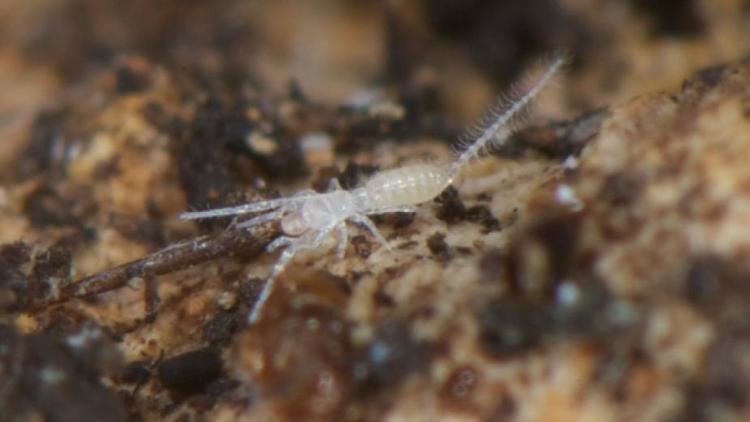 | ||
Similar Arachnid, Ricinulei, Schizomida, Arthropod, Thelyphonida | ||
Class arachnida order palpigradi
A palpigrade, commonly known as a microwhip scorpion, is an invertebrate animal belonging to the order Palpigradi in the class Arachnida, in the subphylum Chelicerata of the phylum Arthropoda.
Contents
- Class arachnida order palpigradi
- Palpigradi arachnida
- Description
- Ecology and behavior
- Classification
- References
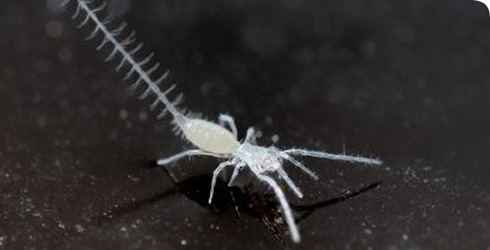
Palpigradi arachnida
Description
Palpigrades belong to the arachnid class. They are tiny cousins of the uropygids, or whip scorpions, no more than 3 millimetres (0.12 in) in length, and averaging 1–1.5 mm (0.04–0.06 in). They have a thin, pale, segmented integument, and a segmented abdomen that terminates in a whip-like flagellum. This is made up of 15 segment-like parts, or "articles", and may make up as much as half the animal's length. Each article of the flagellum bears bristles, giving the whole flagellum the appearance of a bottle brush. The carapace is divided into two plates between the third and fourth leg pair of legs. They have no eyes.
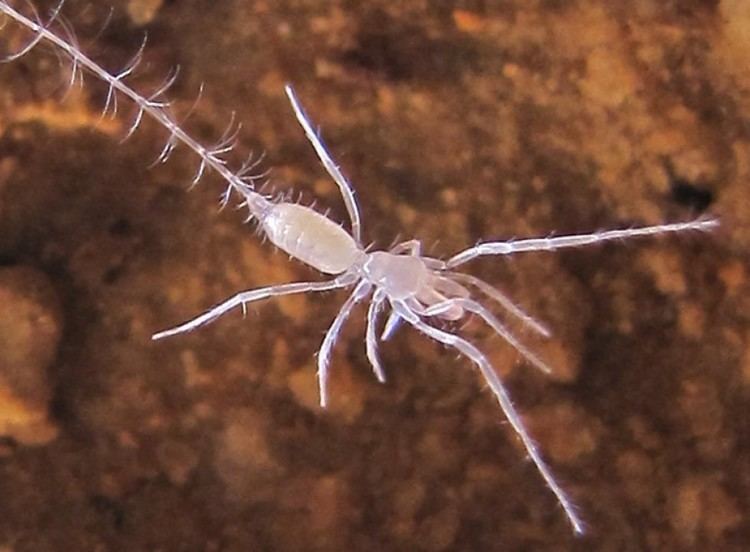
As in some other arachnids, the first pair of legs is modified to serve as sensory organs, and are held clear of the ground while walking. Unusually, however, palpigrades use their pedipalps for locomotion, so that the animal appears to be walking on five pairs of legs.
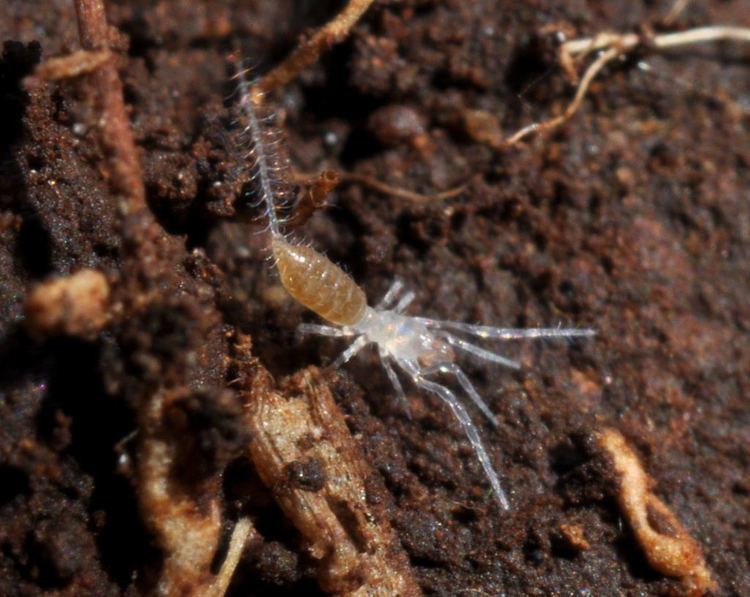
Some palpigrades have three pairs of abdominal lung-sacs, although these are not true book lungs as there is no trace of the characteristic leaflike lamellae which defines book lungs. However, many species have no respiratory organs at all and breathe directly through the cuticle.
Ecology and behavior

Species of Palpigradi live interstitially in wet tropical and subtropical soils. A few species have been found in shallow coral sands and on tropical beaches. In Europe, they have been found in caves and underground spaces. There is one endemic species on the island of Malta, in the Mediterranean Sea, which exists only in one specific cave. They need a damp environment to survive, and they always hide from light, so they are commonly found in the moist earth under buried stones and rocks. They can be found on every continent, except in Arctic and Antarctic regions. Terrestrial Palpigradi have hydrophobic cuticles, but littoral (beach-dwelling) species are able to pass through the water surface easily.
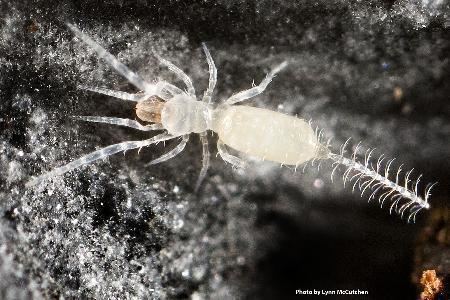
Very little is known about palpigrade behavior. They are generally believed to be predators like their larger relatives, feeding on minuscule animals in their habitat. However, their chelicerae have been described as "more like a comb or brush than the forceps of a predator", and the species Eukoenenia spelaea has been shown to feed on cyanobacteria ("blue-green algae"). Their mating habits are unknown, except that they lay only a few relatively large eggs at a time.
Classification
By 2003, approximately 79 species of palpigrades had been described worldwide, in two families, containing a total of 7 genera. The two families are differentiated by the presence of ventral sacs on sternites IV–VI in Prokoeneniidae, and their absence in Eukoeneniidae.
Two fossil palpigrade species have been described. The first one is from the Onyx Marble of Arizona, which is probably of Pliocene age. Its familial position is uncertain. The second one (Electrokoenenia yaksha), belonging to the family Eukoeneniidae, is known from Cretaceous (Cenomanian) amber from northern Myanmar. Older publications refer to a fossil palpigrade (or palpigrade-like animal) from the Jurassic of the Solnhofen limestone in Germany, but this has now been shown to be a misidentified fossil insect.
